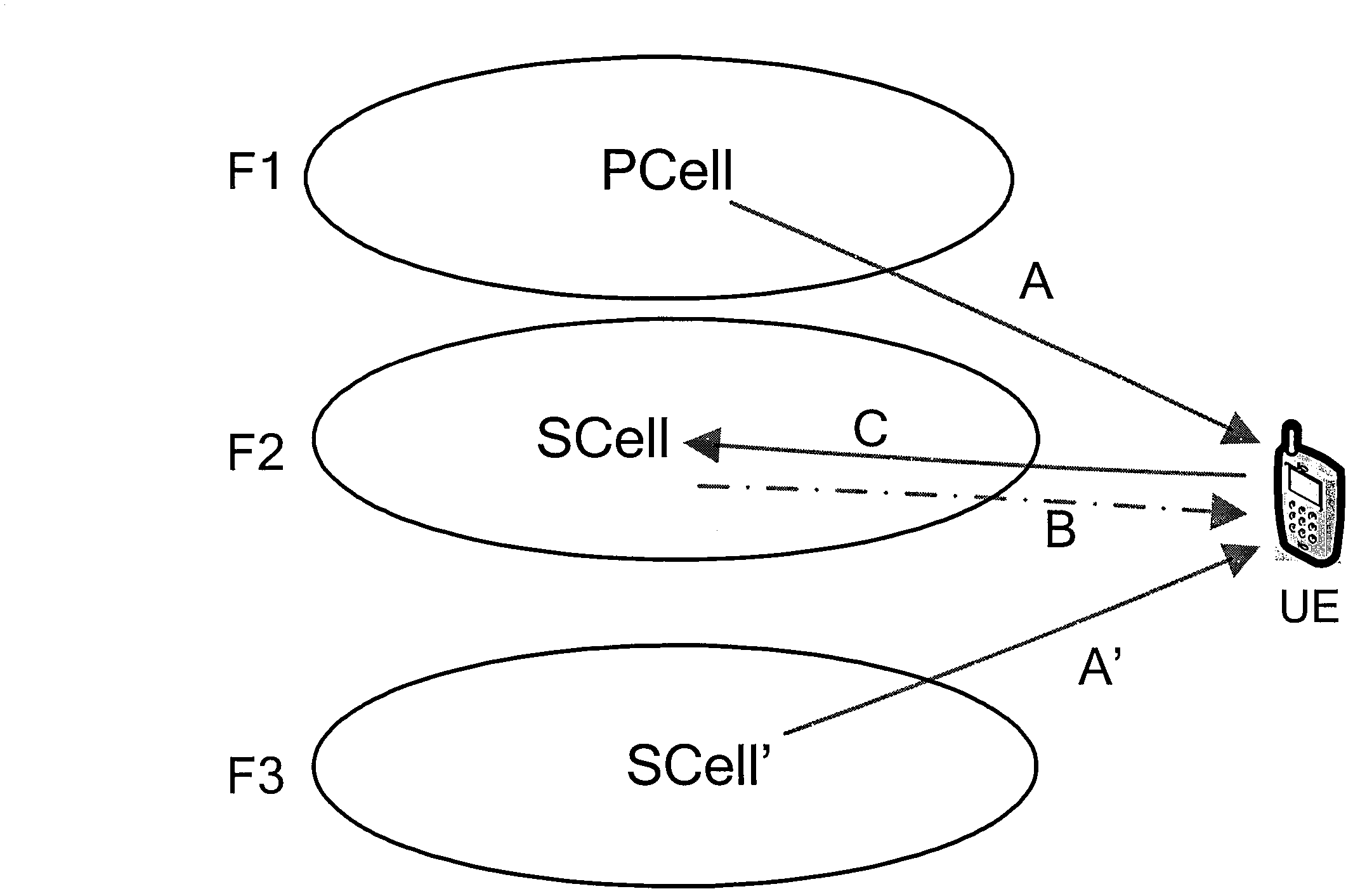Method for randomly accessing secondary cell and method for receiving data
A technology of random access and physical random access, which is applied in electrical components, wireless communication and other directions, and can solve the problem of data reception that does not support random access.
- Summary
- Abstract
- Description
- Claims
- Application Information
AI Technical Summary
Problems solved by technology
Method used
Image
Examples
Embodiment approach 1
[0080] The UE has accessed the primary cell PCell, and has established an RRC (Radio Resource Control) connection with the serving eNB. The serving base station configures the C-RNTI for the UE, and optionally also includes the SPSC-RNTI. Due to service requirements (such as increased throughput), the serving eNB requires the UE to configure another serving cell, called a secondary cell SCell (including downlink and uplink). The secondary cell SCell (the cell index is 1) belongs to a secondary TA group (sTAG), and the timing advance of the sTAG is different from the timing advance used by the primary TA group (pTAG) to which the primary cell PCell belongs. The SCell belonging to the sTAG is configured by the eNB through RRC signaling.
[0081] After knowing that the SCell belongs to the sTAG, the UE knows that it needs to perform random access on the SCell to obtain uplink timing advance.
[0082] Before controlling the UE to randomly access the SCell, the serving eNB should...
Embodiment approach 2
[0097] The UE establishes an RRC connection with the serving eNB. It is configured with pTAG and two sTAGs (sTAG1 and sTAG2). In addition, the UE has accessed the primary cell PCell in pTAG and the secondary cell SCell' in sTAG1, and has obtained the respective uplink timing advances of pTAG and sTAG1.
[0098] The serving eNB activates the SCell belonging to sTAG2, which requires the UE to access the SCell.
[0099] In the case of cross-carrier scheduling, if the PCell is configured to schedule the SCell across carriers, the PCell can send a random access instruction to access the SCell of the secondary cell to the UE, which is similar to the first embodiment, as shown in figure 1 As shown by arrow A in , the frequency band (including uplink and downlink) occupied by the primary cell PCell is F1. . If SCell' is configured to schedule SCells across carriers, the secondary cell SCell' in sTAG1 can also send random access instructions to UE, such as figure 1 As shown by the ...
Embodiment approach 3
[0108] In the first two embodiments, in order to exemplify the specific implementation of the random access command for randomly accessing the SCell, the DCI 1A and the carrier indicator indicate the cell index of the Scell. In a variant embodiment, the carrier indicator may not be used to indicate the cell index of the random access secondary cell SCell, but a newly designed dedicated information element IE is used to indicate the random access secondary cell SCell, for example, indicating its cell index.
[0109] In another variable implementation manner, it is not necessary to indicate the index of the SCell for random access, but only inform the UE to randomly access the Scell, and the specific SCell for access is determined by the UE itself. For example, the carrier indicator is set to a specific value other than 0, such as 1 (1 bit) or 111 (3 bits) to indicate that the DCI 1A is used to indicate random access to the secondary cell. Alternatively, other information eleme...
PUM
 Login to View More
Login to View More Abstract
Description
Claims
Application Information
 Login to View More
Login to View More - R&D
- Intellectual Property
- Life Sciences
- Materials
- Tech Scout
- Unparalleled Data Quality
- Higher Quality Content
- 60% Fewer Hallucinations
Browse by: Latest US Patents, China's latest patents, Technical Efficacy Thesaurus, Application Domain, Technology Topic, Popular Technical Reports.
© 2025 PatSnap. All rights reserved.Legal|Privacy policy|Modern Slavery Act Transparency Statement|Sitemap|About US| Contact US: help@patsnap.com

